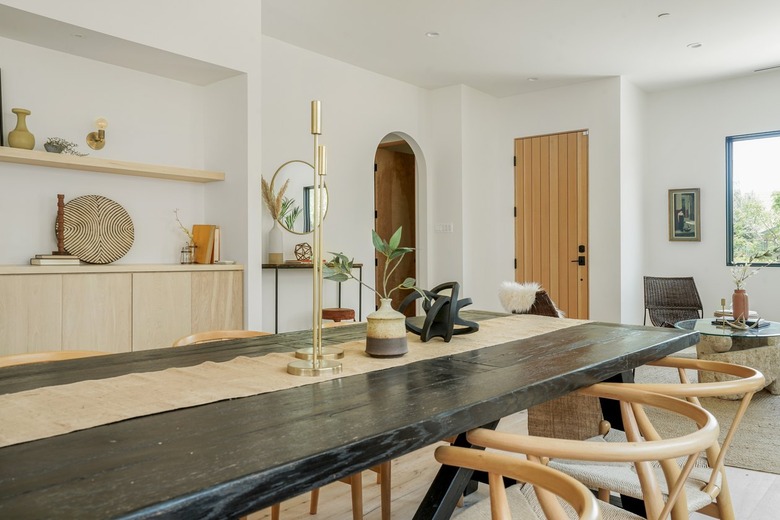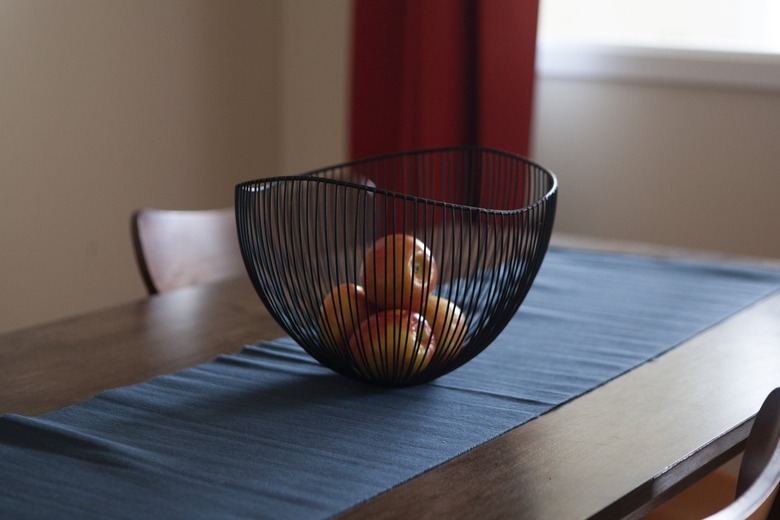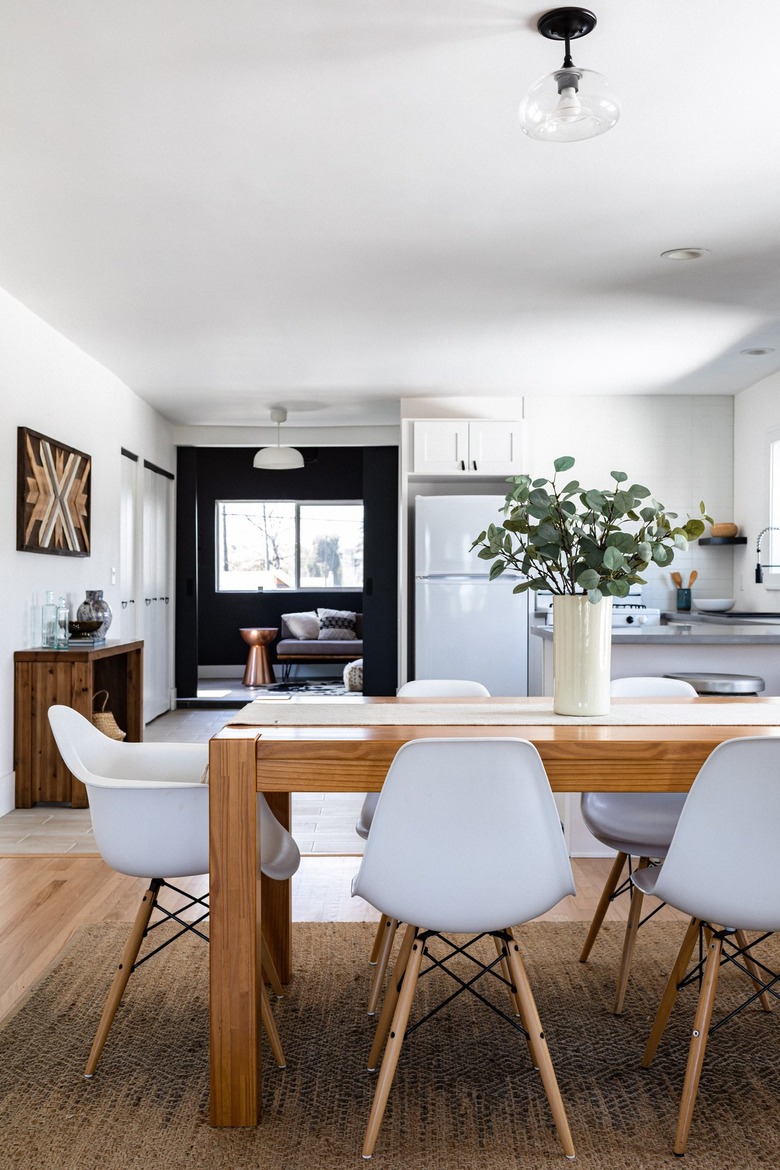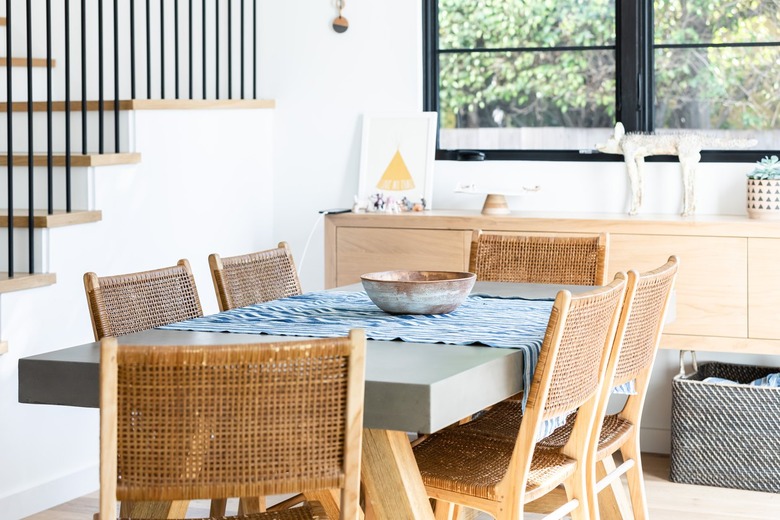How To Use Table Runners: 8 Helpful Tips
Give your dining room a quick update with the addition of a table runner. What is a table runner exactly? It's a piece of fabric that can be placed down the center of the table (running parallel to the length) or perpendicular, for embellishment. The decorative feature can be used with or without a tablecloth.
It's a pretty old-school addition to any table, but runners clearly have staying power. They can dress up a plain surface in the blink of an eye, whether decorating for the holidays, a gathering, or for everyday use. Plus, there are a wide variety of options to choose from so no matter your color scheme or decor style, you'll be able to find a design that will blend in beautifully.
Table runners can be difficult to use properly though. If you don't buy the right length, the ends will pool on the floor. Too short, and the ends won't hang properly off the sides. Another factor to consider is the type of fabric. There are many different materials you can choose from, such as burlap, macrame, and yes, simple cotton. Most runners are long and rectangular. And while some feature decorative details in the center, others display designs toward the ends.
Even though you may not necessarily need a runner (it's not like a tablecloth that covers the whole table and protects it from spills and stains), it might be nice to add a little extra flair to your dining room.
Here's how to do it right.
How to Choose the Right Table Runner
How to Choose the Right Table Runner
These days, there are no strict rules for table runners. While they've mostly been used for dining room tables, people are getting more and more creative with their runners. You can place one on a coffee table to give it visual appeal or to cover scratches. It can go underneath a TV for a decorative touch, on a kitchen island that's mostly used for eating meals, on a console table in your entryway — the sky's the limit, as long as you're working with a surface that can accommodate the length of a runner. But let's go over a few basics before you start shopping.
1. Size
Sizes of table runners can vary. A typical runner is sized between 36 to 108 inches, and widths can run between 10 and 15 inches. This is why it's so important to measure your table, including any extensions or drop-leafs, before making your purchase. Traditionally, the width of a runner should be one-third the width of the table with a standard six-inch drop on either end. And if you plan to pair it with a tablecloth, both the drop of the tablecloth and runner should be the same. So for example, if you have a 6-foot by 3-foot table, you would divide the width by three to give you one-third of the width, which would be 1 foot, or 12 inches wide. To determine the length, you add 12 inches (a six-inch drop on either side) to the overall length of the table, which in this example is 72 inches. So the runner should be 84 inches long.
2. Table Shape
Runners can be used on any table shape, from round to oval and square to rectangular. Regardless of the shape of your dining table, figuring out the dimensions of your table runner remains the same — the width should be one-third the width of your table, with a standard six-inch drop on either end.
3. Lengthwise Placement
Before buying a table runner, measure the width and length of the table. The correct table runner size when placed lengthwise down the center of the table should be one-third the width of the table. It should also be a minimum of 12 inches longer than the table to allow a six-inch drop on each end.
If you use a tablecloth underneath the table runner, the ends of the runner should be even with the edge of the tablecloth. Shorter table runners used as a textural foundation for a centerpiece or tablescape should be one-third the length of the table. Reserve these table runners for informal settings.
4. Widthwise Placement
Table runners placed across the width of a table should appear slightly narrower than a runner placed lengthwise. Keep these runners at one-fourth the width of your table. When deciding on the table runner length, use the same drop guideline as a lengthwise runner, allowing 6 inches on each side of the table, with or without a tablecloth.
Runners that are used widthwise should align with each table setting, serving as a placemat for two. Separate multiple runners on long dining tables by 24 inches to avoid an overcrowded appearance. Placemats, and their accompanying napkins and chargers, can also be layered on top of table runners that are placed widthwise or used alongside runners that are placed lengthwise.
5. Fabric Options
When setting formal tables with complex centerpieces in a dining room, table runners provide a visual guideline for keeping the components aligned in the center of the table. Use fabrics that complement the style of the room, the table, serving dishes, and the overall setting, whether it's casual or formal.
Some fabrics, like velvet or satin, are fancy and best for special occasions — unless, of course, you just want to add a luxe touch to your space every day! More casual fabrics, like burlap or macrame, work nicely in farmhouse or boho spaces and can be shown off daily. Cotton (with geometric shapes or painted designs) looks best in modern dining rooms.
Textiles such as organza, silk, satin, and polyester complement formal settings and look best when layered over high-quality linen tablecloths or used as table decoration on glass or lacquered surfaces. Lace and embroidered fabrics also lend an upscale feel to tabletops and can be used with or without an underlying tablecloth.
In a casual setting (like a kitchen table), a lightweight, vibrant table runner will add color to natural wood grains. For a more rustic, organic feel, select fabrics with neutral colors and coarse textures, such as jute, twill, grasscloth, or burlap. You can also use table runners as decorative embellishments on other types of furniture in a living room or bedroom, such as a coffee table, dresser, end table, console table, trunk, or chest.
6. Color
The color of your table runner is a highly personal choice. There are options available in every color of the rainbow, so it really comes down to the overall look you are going for. Consider the palette in the room, table finish, dishware color, and the mood you are hoping to achieve. Before you commit to a table runner, you can always get small swatches in different colors from a fabric store to get a better idea of what hues and materials would look best in your space.
How to Use a Table Runner
How to Use a Table Runner
A runner can be placed lengthwise on a long table, and preferably, your chairs should not rest right against it. A round table can be handled in the same way. You can absolutely layer two runners on top of one another — just be sure that one is a bit smaller than the other so that it stands out on its own. Or, you can place a runner with an open weave, like one made of macrame, over a solid-colored runner for added visual interest.
Although a runner can often stand on its own — especially if it showcases an ornate, decorative design — to really anchor the look, you should place a centerpiece on top of it. Not only will it serve as a focal point, but a centerpiece (if it's heavy enough) can also keep the runner from sliding around.
7. Decorative Toppers
Items placed on top of a table runner can be as simple as a bowl of fruit or a vase of fresh flowers. Table decor such as candles and candleholders make elegant additions, and the table runner will act as a barrier to protect against wax drippings.
For seasonal displays, or on special occasions, fill a shallow tray with assorted miniature pumpkins and gourds or arrange a trio of bird's nests with greenery on a cake platter, filled with speckled candy eggs. Fill assorted glass vases with water and floating candles or simply add colorful citrus fruit. Let the occasion and the room decor guide you.
8. Occasion
Table runners offer a simple way to dress up your table, whether it's casual or upscale. Experiment with different placements and drop lengths to find a look that you love.
Just a Few Things to Keep in Mind
Just a Few Things to Keep in Mind
A table runner can be a stylish addition to almost any table. Just be sure to measure, measure, measure before buying one. You can pair it with other things, like a tablecloth underneath, or you can match up two runners together for a layered look. Find a design that fits the mood and color palette of your space. And don't just reserve runners for special occasions. Feel free to display one year-round if that's what you prefer.



